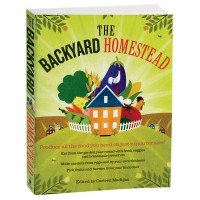
Perennials, Annuals, and Bulbs for October
Right now Spring may seem a long way off, and not really on your mind. Remember the feeling you got as
you went into your garden last Spring, and there it was... the first new growth of the new year...
Felt great, didn't it?
With a little planting effort now, you will speed the timing of that first new growth by as much as a month.
During the fall months, after soil temperature drops below 60°F., the bulbs of spring flowering tulips, daffodils, hyacinths, Siberian squill,
dwarf irises, Anemone, and crocus should be planted. Select healthy, disease free bulbs. Add bone meal or bulb fertilizer into the planting hole,
as you prepare the soil.
Most spring flowering bulbs should be in the ground by the early part of this month, with the exception of Tulips which may be planted
up until early November.
- Gladiolas, Dahlias and other tender bulbs
should be dug before the ground freezes, after the tops are browned by frost,
and stored in a cool, dark area. Allow to dry, clean off soil, and
store in peat moss or vermiculite in a cool location free from frost.
Dahlia and Begonia tubers should be stored in a box of slightly moist
peat moss. Gladiola corms can be stored in a paper bag without
additional packing.
- Be sure that new plantings and perennials which were divided and moved last month are kept watered if there has been insufficient rainfall.
- There is still time to set out winter pansies, flowering Kale, flowering Cabbage, and fall mums. Keep a little color in the
garden for as long as possible.
- Geraniums, begonias, fuchsias, and other tender plants should be brought indoors or moved to a coldframe before the first frost.
- Watch your thermometer on colder nights. A windless, cold, clear night usually means a killing frost.... You can keep your Chrysanthemums and Asters blooming for
quite a while longer if you take the time to provide a little frost protection for them. A small, simple frame covered with cheesecloth or an old bed sheet placed
over your plants on frosty nights, can add a month or more of garden blooms. (Don't forget to remove the cover as soon as the danger has passed!)
- Mulching fall planted perennials will keep the soil warmer longer, allowing root growth to continue, however, the plants do need time to
harden off for winter. Spread a thin layer of mulch after fall planting, and then add a thicker layer once the ground has frozen.
- Don't forget to collect and save seeds of wildflowers to sow next spring.
- According to Ohio State researchers, cold water can destroy the ability of root cells to take in water and nutrients. Water below
50F was found to reduce leaf size, cause leaf drop, and eventually contribute to the death of potted plants. Those
requiring frequent watering, such as spathiphyllum and ficus, are especially prone to damage and should not be watered with water
below 65F. Other tests show that warmer water (about 90F) actually stimulates growth.
- One of the most popular of the early spring flowers is the
perennial Polyanthus Primrose (Primula x polyantha). Plant some
this fall, and you will have a rainbow of colors when the weather
breaks. Other plants that can planted early include Calendula,
Iceland poppy, pansy, stock and sweet pea.
- Small imperfections, such as nicks and loose skin, should not
affect the quality of most bulbs. Store bulbs in a cool area
(below 65F) if unable to plant immediately.
- To achieve a more-relaxed, "natural" look, plant scattered clusters of early
flowering bulbs, such as crocus, throughout your lawn. But, don't mow the area
until the foliage dies the next summer.
- Ferns can be planted or transplanted in fall.
- Calathea, a popular foliage plant, flourishes in low light and
over a wide temperature range indoors. It may be called 'the
second-chance plant' because if you forget to care for it for a
few weeks, just water well, trim off the damaged areas, and watch
for new shoots to emerge in about a month.
- Be sure to clean up from around your perennial flowers, such as rose and peony.
If left on the ground, leaves and stems can harbor diseases and provide convenient
places for pests to spend the winter.
- Hyacinths have an oil in the bulbs that may make some people
itch. Wear gloves when handling these bulbs or wash your hands
with cool water and soap immediately after planting.
- It's not unusual for some spring-flowering bulbs to send up a few leaves in
the late fall or early winter. The bulbs will remain safe over the winter and
will still produce flowers next spring.
- Move and divide crowded perennials. Arrange for swaps with
friends and neighbors.
- A variegated variety of Vinca minor with its evergreen foliage
will provide colorful greenery in window boxes during the winter.
- Cut down stems and foliage of herbaceous perennials when the
leaves begin to brown.
- If you have a sunny area to naturalize with small, flowering
annuals, sow seeds of sweet alyssum or Johnny jump-ups. They will
come up this fall or early spring and bloom extra early next
spring. Both are very hardy and self seed readily to maintain the
natural area.
- Add mulch to your perennial border. A 1-inch layer of weed-free straw or
chopped leaves will help conserve soil moisture, protect the root system, and
reduce plant loss by soil heaving during the winter.
- Allow a few of the seeds of your favorite delphinium and
hollyhock to ripen on their stalks. When mature, plant the seeds
at once in a garden bed where they will grow into husky little
plants that survive the winter well.
- A lily bulb is never dormant; it must be planted as soon as it
is received. Have beds prepared ahead of time.
- As you clean out the flower beds, mark the spots where late
starting perennials will come up next spring to avoid damaging
them while working in the beds.
"Tickle the earth with a hoe, it will laugh a harvest."
-- Author Unknown


Organic Savings!

The food industry's digusting secrets exposed. How to protect yourself.
Click Here!

What's New?
Discover how to easily build an attractive and affordable greenhouse that will grow anything in any conditions. Also, building your own greenhouse just makes economical sense. You can build a greenhouse at just a fraction of the cost of buying a pre-built one. Most pre-built greenhouse you buy need to be assembled anyway, you are really just paying hugely inflated prices for the material.
Click Here!
Book of the Month


Grow the vegetables and fruits your family loves; keep bees, raise chickens, goats, or even a cow!
The Backyard Homestead shows you how it's done. And when the harvest is in, you'll learn how to cook, preserve,
cure, brew, or pickle the fruits of your labor.






 The food industry's digusting secrets exposed. How to protect yourself.
Click Here!
The food industry's digusting secrets exposed. How to protect yourself.
Click Here!
